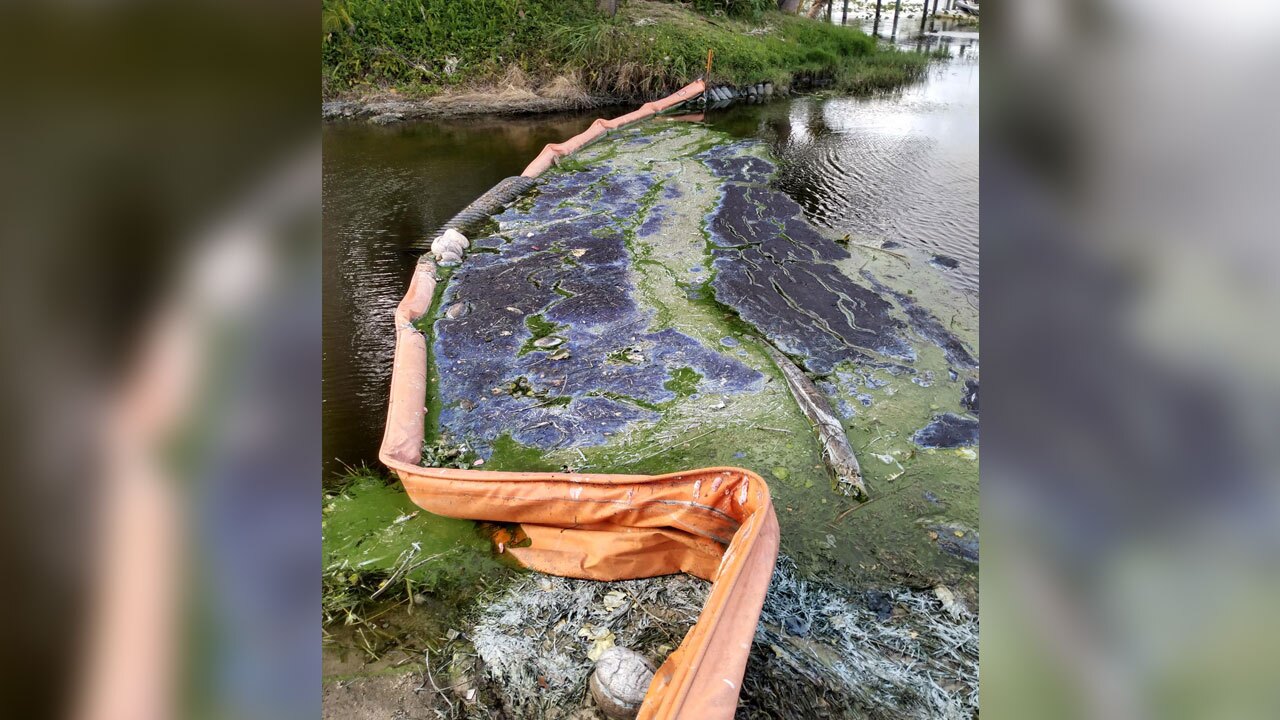PALM BEACH COUNTY, Fla. — The algae issues that were spotted a few weeks ago near Lake Clark Shores in Palm Beach County appear to be worsening, and it's bringing a potent stench.
SPECIAL COVERAGE: Protecting Paradise
Resident James Sylvester, who lives along the C-51 canal and Lake Clarke, sent WPTV photos of the slimy mess Thursday.
Sylvester said the smell is right outside his front door.
"[The smell is] almost like you've been to the dump. It's almost like sewer smell," Sylvester said. "Every day it keeps getting bigger and bigger and bigger."
Homeowners told WPTV last week that the algal bloom first appeared a couple of weeks ago.

The recent algae blooms in parts of Palm Beach County are likely not coming from water in Lake Okeechobee, according to the Army Corps of Engineers.
During a Friday phone briefing, Col. Andrew Kelly said there have been no recent releases of water leading into the C-51 canal, which stretches along Southern Boulevard and turns south along Interstate 95.
Kelly said the C-51 canal is not, "a big player," in easing water levels in Lake Okeechobee and the algae may likely be coming from runoff.
According to South Florida Water Management, the most recent water tests show low levels of the toxin microcystin. A week earlier a test in the C-51 canal near State Road 7 showed a high concentration.
Back at the area where the #bluegreenalgae matted up near Lake Clarke Shores. It stinks. And with this wind blowing it right towards my direction it’s horrible. 🤢 I was able to get an underwater look of this slimy mess. Stay tuned to WPTV tonight for an update. @WPTV @WPTVMatt pic.twitter.com/U2xsOLiiQb
— Eric Pasquarelli (@PhotogEricP) May 21, 2021
Dr. Malcolm McFarland at Florida Atlantic University Harbor Branch studies the algae, the toxicity levels and the dangers. He said the blue-green algae is not limited to the lake.
"Water as it runs off people's lawns and farms, and it can end up carrying with it high concentrations of things like nitrogen and phosphorus, fertilizers basically, and these fertilize algae growth," McFarland said.
Kelly said Lake Okeechobee's water level is at 13.25 feet, and it's going down, which is good news as the rainy season approaches.
The Corps says 61 percent of the water releases from Lake Okeechobee are going south into the Everglades.




